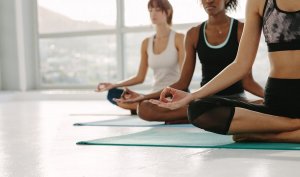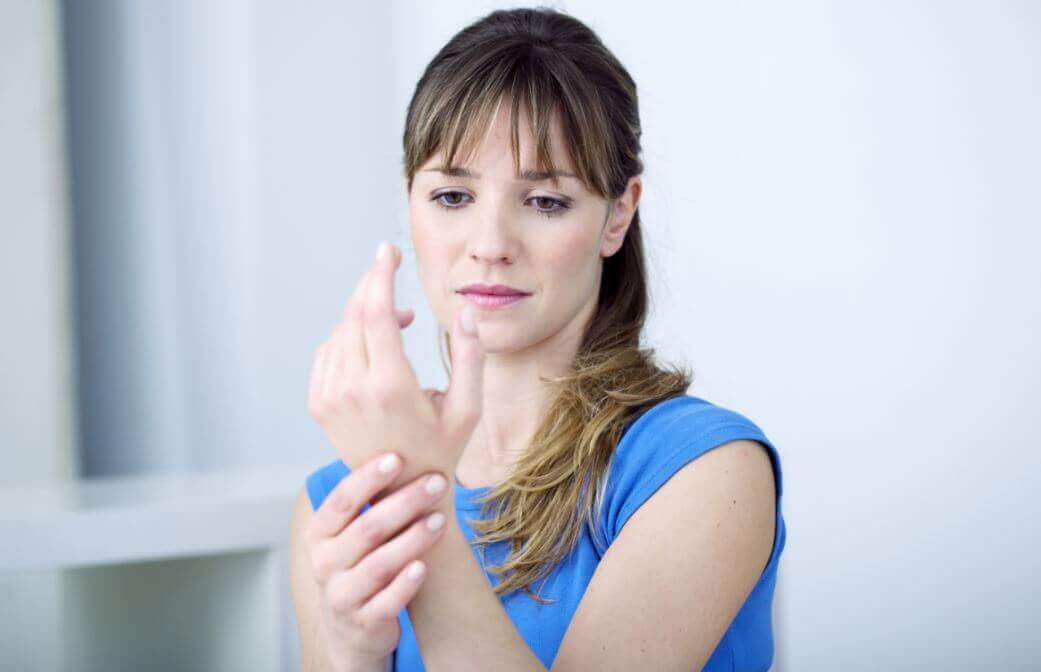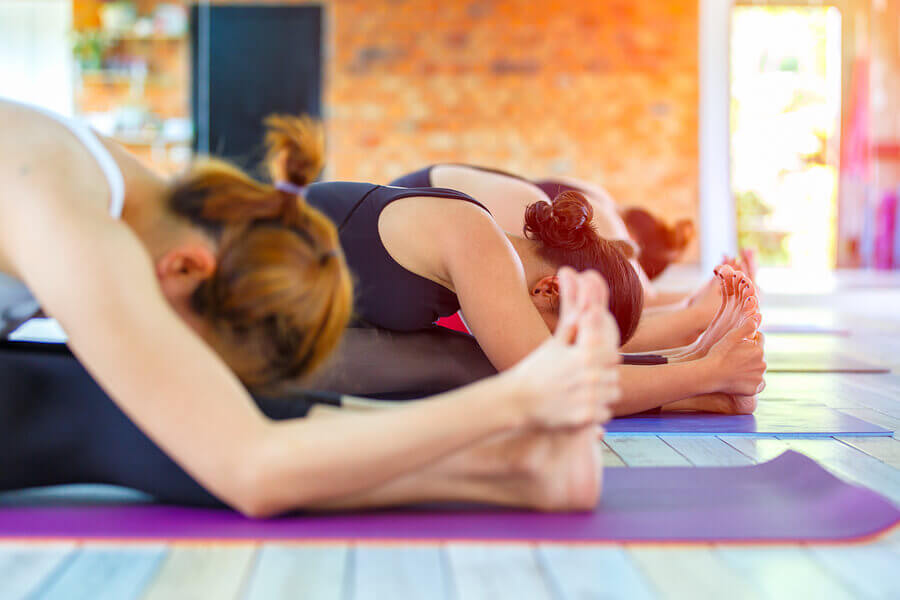How Does Yoga Have An Effect on Rheumatoid Arthritis?

According to the World Health Organization, one in 30 people suffer from rheumatoid arthritis. This medical condition consists of inflammation of large groups of joints. Although there’s no cure for this disease, yoga may help to alleviate symptoms.
Yoga is a mental and physical discipline that involves meditation through a series of routines. The postures focus on relaxation, mental serenity, and joint flexibility. So, how can yoga help with rheumatoid arthritis?
Fights stress and rheumatoid arthritis
There’s a relationship between stress and rheumatoid arthritis. Joint pain can cause stress and frustration.
It’s also known that high levels of stress can generate a greater impact on the joints. When stressed or upset, sensitivity tends to increase. Mental stress can also cause physical stress, cramps, muscle exhaustion, and different pathologies.
Therefore, an important benefit that yoga can provide is an improvement to a person’s mental state. When a person is in a better mental state, it’s easier to address specific issues. In other words, yoga can help a person suffering from this disease to see it in a different light.
Yoga relaxes muscles
The yoga postures to relax muscles can help alleviate strain. Stretching and the progressive implementation of postures can also have a relaxing effect on the body’s muscles.

A lot of the movements in yoga can also help practitioners to increase flexibility. It’s clear that this practice has a direct impact on the tendons. Since there are no weights that are implemented in yoga, it allows for exercise without the risk of cramps and stress.
In fact, during the first sessions, practitioners get to see how rigid their body really is. Over time, yoga helps to develop flexibility. In addition, it can also help to relieve and prevent pains caused by bad posture and muscle stress.
Yoga improves the body’s response to diseases
Since yoga helps to reduce stress, it can reduce the levels of cortisol in the body. Cortisol is a hormone closely associated with states of mental and emotional stress.
When we release stress, the secretion of cortisol is suppressed. Nowadays, it’s known that maintaining high levels of cortisol in the body can lead to alterations in the immune system. It’s believed that cortisol may weaken the immune system giving way to the entry of pathogens.
When cortisol is controlled, the body is better suited to fight arthritis. It’s not known to what extent this can delay the condition, however, it’s another thing patients can do.
Yoga helps to reduce inflammation from rheumatoid arthritis
A study carried out by researchers at the University of Ohio showed that yoga can be effective against inflammation. Fifty women with varying experience of practicing yoga were included in the experiment.

They were subjected to stress, which, as we previously mentioned, is a trigger for rheumatoid arthritis inflammation. In addition, blood tests were performed in which the indicators related to inflammation were verified. When comparing results, it was established that women who practiced more yoga had lower levels of inflammation.
The research showed that new yoga practitioners had higher levels of IL-6 protein. IL-6 is the protein that’s directly related to inflammatory processes.
There was a 40 percent difference between beginners and experienced practitioners. This proves that yoga can effectively reduce the inflammation caused by rheumatoid arthritis.
As you can see, the benefits of yoga for rheumatoid arthritis has been proven. It’s important to emphasize that any practice leading to a state of relaxation can be beneficial. The important thing is try out all the alternatives which will allow you to increase your quality of life.
According to the World Health Organization, one in 30 people suffer from rheumatoid arthritis. This medical condition consists of inflammation of large groups of joints. Although there’s no cure for this disease, yoga may help to alleviate symptoms.
Yoga is a mental and physical discipline that involves meditation through a series of routines. The postures focus on relaxation, mental serenity, and joint flexibility. So, how can yoga help with rheumatoid arthritis?
Fights stress and rheumatoid arthritis
There’s a relationship between stress and rheumatoid arthritis. Joint pain can cause stress and frustration.
It’s also known that high levels of stress can generate a greater impact on the joints. When stressed or upset, sensitivity tends to increase. Mental stress can also cause physical stress, cramps, muscle exhaustion, and different pathologies.
Therefore, an important benefit that yoga can provide is an improvement to a person’s mental state. When a person is in a better mental state, it’s easier to address specific issues. In other words, yoga can help a person suffering from this disease to see it in a different light.
Yoga relaxes muscles
The yoga postures to relax muscles can help alleviate strain. Stretching and the progressive implementation of postures can also have a relaxing effect on the body’s muscles.

A lot of the movements in yoga can also help practitioners to increase flexibility. It’s clear that this practice has a direct impact on the tendons. Since there are no weights that are implemented in yoga, it allows for exercise without the risk of cramps and stress.
In fact, during the first sessions, practitioners get to see how rigid their body really is. Over time, yoga helps to develop flexibility. In addition, it can also help to relieve and prevent pains caused by bad posture and muscle stress.
Yoga improves the body’s response to diseases
Since yoga helps to reduce stress, it can reduce the levels of cortisol in the body. Cortisol is a hormone closely associated with states of mental and emotional stress.
When we release stress, the secretion of cortisol is suppressed. Nowadays, it’s known that maintaining high levels of cortisol in the body can lead to alterations in the immune system. It’s believed that cortisol may weaken the immune system giving way to the entry of pathogens.
When cortisol is controlled, the body is better suited to fight arthritis. It’s not known to what extent this can delay the condition, however, it’s another thing patients can do.
Yoga helps to reduce inflammation from rheumatoid arthritis
A study carried out by researchers at the University of Ohio showed that yoga can be effective against inflammation. Fifty women with varying experience of practicing yoga were included in the experiment.

They were subjected to stress, which, as we previously mentioned, is a trigger for rheumatoid arthritis inflammation. In addition, blood tests were performed in which the indicators related to inflammation were verified. When comparing results, it was established that women who practiced more yoga had lower levels of inflammation.
The research showed that new yoga practitioners had higher levels of IL-6 protein. IL-6 is the protein that’s directly related to inflammatory processes.
There was a 40 percent difference between beginners and experienced practitioners. This proves that yoga can effectively reduce the inflammation caused by rheumatoid arthritis.
As you can see, the benefits of yoga for rheumatoid arthritis has been proven. It’s important to emphasize that any practice leading to a state of relaxation can be beneficial. The important thing is try out all the alternatives which will allow you to increase your quality of life.
All cited sources were thoroughly reviewed by our team to ensure their quality, reliability, currency, and validity. The bibliography of this article was considered reliable and of academic or scientific accuracy.
- Enfermedades reumáticas. lnforme de un Grupo Cientifico de la OMS. https://apps.who.int/iris/bitstream/handle/10665/39682/9243208160_spa.pdf?sequence=1&isAllowed=y
- US National Library of Medicine. 2011. Stress, Inflammation, and Yoga Practice. Extraído de: https://www.ncbi.nlm.nih.gov/pmc/articles/PMC2820143/
- Lilly.es. 2019. Yoga y música para mejorar el manejo de la artritis psoriásica. Extraído de: https://www.lilly.es/es/noticias/notas-de-prensa-terapeuticas-2019/np-artritis-psoriasica-muevete.pdf
This text is provided for informational purposes only and does not replace consultation with a professional. If in doubt, consult your specialist.








